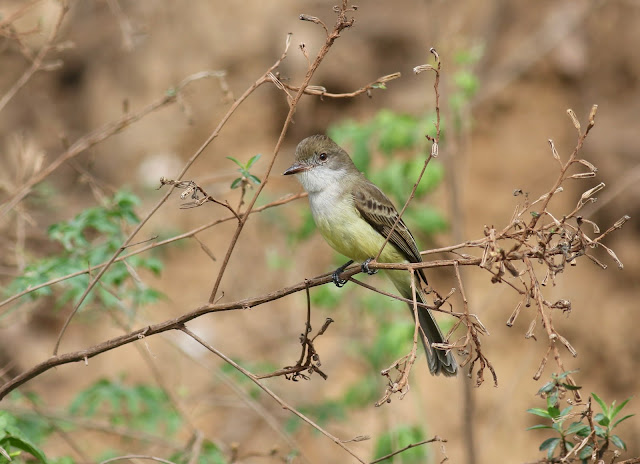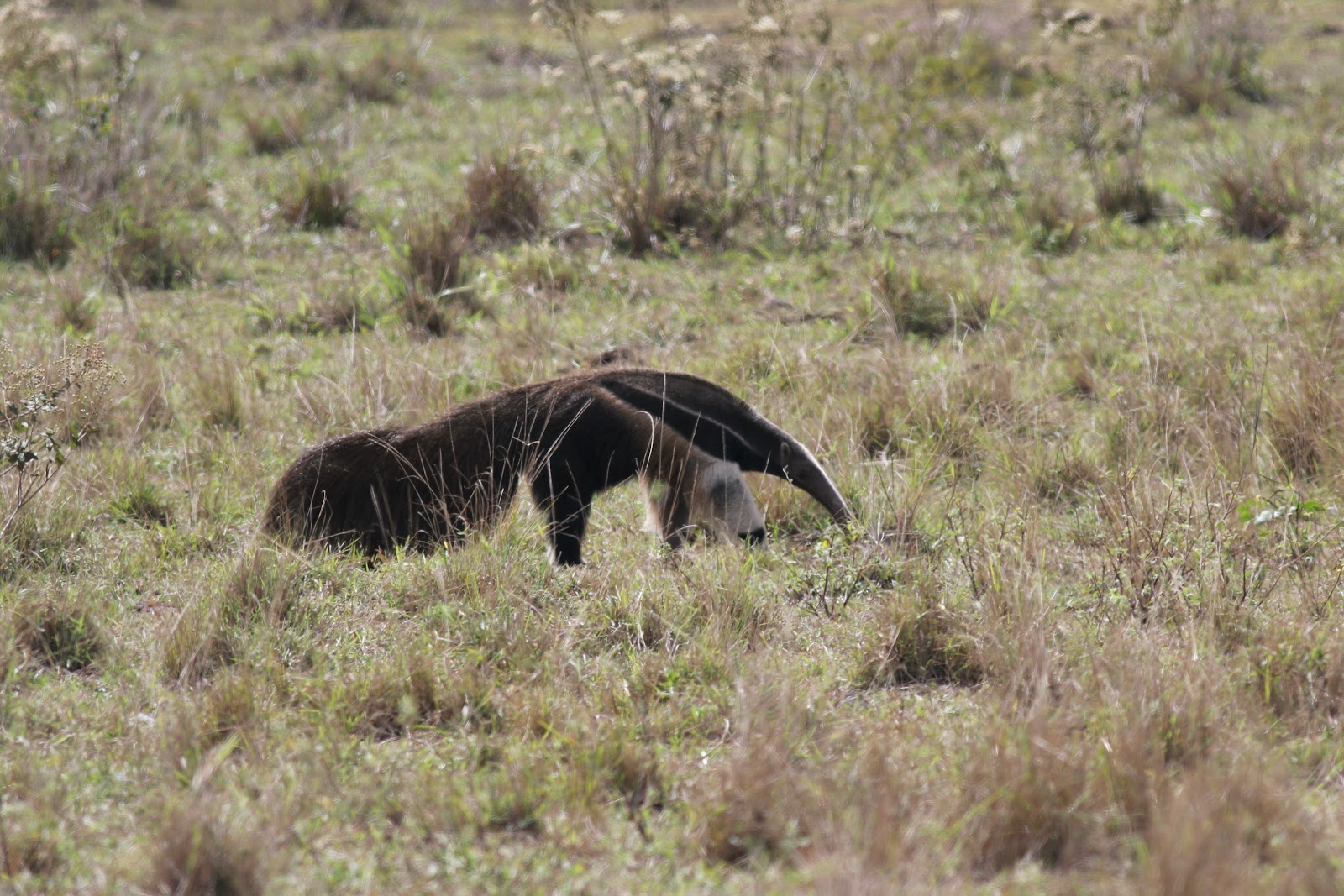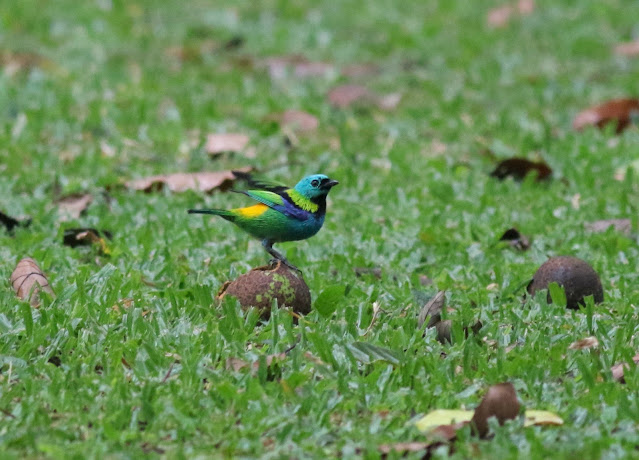My dear old friends of the blogosphere,
My deepest apologies for such a long radio silence, but I assure you it was for good reason. I have been traveling for over two weeks in our American neighbor from down under, Brazil or Brasil depending on who you are. Over two years ago I signed up for this tour to the Pantanal run by a friend (Sherry) from the Carolina birding scene but then the pandemic happened. Brazil was hit particularly hard so a tour down there was not possible. Fast forward two years to now conditions were ripe for a revenge tour, the revenge against COVID and the havoc that she brought.
For the uninitiated, here is the link to the Wiki page which gives some good basic facts about the Pantanal: https://en.wikipedia.org/wiki/Pantanal.
However, you can't just fly direct to the Pantanal from the states, so we planned to land in Sao Paolo and since most of us were taking red-eye flights arriving early, we were about to plan a short birding excursion in a nice park just outside of Sao Paolo at Pasqueiro Cantareira. Sherry hooked us with a local guide and he did a good job of finding us close to 50 species most of which were life birds for most of us. Here is the eBird checklist: https://ebird.org/checklist/S116637010 or for those of you that prefer my corny jokes and weird humor, here is an account of the just over 5 hours we spent.
At arrival in Sao Paolo, my flight arrived a little earlier than Kent's so after meeting the rest of the group outside the terminal, I picked up a couple lifers on the airport grounds.
Common Waxbills are an introduced species from Sub-saharan Africa that have spread through the caged bird trade across the globe.
Eared Doves are basically the South American version of our Mourning Doves.
Chalk-browed Mockingbirds are basically the Southeast South American version of our Northern Mockingbird.
Kent arrived 25 minutes later and off we were to our first real birding stop. The weather was not great but the rain held off most of the time. The park itself looked to be mostly a stocked lake for fishing but there were trails and even some fruit feeders to attract the birds.
Dusky-legged Guans greeted us in the parking lot. Never assume you will get birds again later, treat each new species as if you may never see it again. This was a species we only saw at this spot, mainly because we only birded Sao Paolo once. This species is mainly found in the coastal areas of Brazil, Argentina and Uruguay but there is a sub-species that can be found in Paraguay and Bolivia.
Ruby-crowned Tanager - I probably would have struggled with this one as there seems to be no shortage of rufous looking female birds in Brazil, but our guide tipped us off.
The male also is problematic as a simply black bird which only gives glimpses of its namesake when agitated and try but I may I was not able to agitate him.
You can just make out a hint of the ruby crown here. This species is practically endemic to Brazil with some slight incursion into Paraguay and Argentina.
Rufous-collared Sparrows are familiar for anyone that has visited the highlands of Costa Rica and they are widespread throughout South America.
Golden-chevroned Tanager is truly endemic to the coastal region of Brazil and it seems I was the only one to see it in the group or at least it wasn't on the group eBird checklist until I added it. The birding was really fast paced when the tanager flock rolled by and no one really called this one out because other more colorful ones were all over the feeders. I snapped as many photos as I could knowing I would have more time to scrutinize them later.
Here the Golden-chevroned is fighting over a scrap with a Ruby-crowned Tanager.
Blue Dacnis is a widespread species in Latin America but they are always good to see.
Blue-naped Chlorophonia is a stunning bird but I didn't spend much time on it because I previously crushed them in Colombia as seen here: Blue-naped Chlorophonia
Sayaca Tanager - I would have not even hesitated calling this a Blue-gray Tanager but in Southeast Brazil they don't have BG Tanagers, they have Sayacas. The Sayaca can be differentiated from BG Tanagers where they overlap by the more dull hue and also the Sayaca lacks a pale shoulder patch which most BG Tanagers have.
Golden-winged Cacique was a big surprise to the guide who says he usually does not see them, but they can be found in several countries in southeast South America.
House Wren - I fully expected this to be a different species of wren but it turned out it was just a House Wren. That being said, the southern House Wren may be split some day so a man can hope for an extra tick.
Brassy-breasted Tanager! What an eye-popping species and endemic to a relatively small area on the Brazilian coast. I took over a hundred photos but will spare you the slightly different pics of the same bird.
Not bad for a combination! Blue Dacnis, Brassy-breasted and Green-headed Tanager all in the same frame.
Green-headed Tanager - this species is found in Argentina and Paraguay too. The name seems a bit of a misnomer to me. Maybe Turquoise-headed or Green-napes would have been more apropos.
Amazon Kingfisher - in the field this bird is much easier to ID because of size compared to the similar but much smaller Green Kingfisher. The Green has more white spotting on the wing but I think there is some overlap with that.
Violet-capped Woodnymph - I was surprised in the utter lack of nectar feeders in Brazil, so we were left with looking for appropriate flowers to find hummers. This species can also be found in other countries in SE Brazil.

Plain Antvireo female - this is a widespread Latin American species. Learning to differentiate families of birds is very helpful when acclimating to birding in Latin America. For example, learn how to differentiate an Antvireo from an AntShrike from an Antwren from an Antbird or even an Antpipit.
Spot-backed Antshrike - speak of the devil! The Antshrikes typically have much heavier hooked bills like our Shrikes.
Swallow-tailed Manakin - this family of birds (Manakins) are notoriously difficult to see unless they are displaying. This one was buried deep in the undergrowth and never was very coooperative but I managed a few half decent pics. The vast majority of the pics were blurred and only bits and pieces of the bird.
The species is also known as the Blue Manakin and is found in the Atlantic forests of south-eastern South America.
We only had glimpses of this Variable Antshrike female which admittedly did not have a big bill but better looks would have revealed the hooked aspect.
Rufous Gnateater - another Atlantic forest specialist.
Rufous-capped Spinetail is yet another Atlantic forest denizen that can be found in Brazil, Argentina and Paraguay.

We also had brief looks at a Pallid Spinetail but I was not quick enough on the draw which is unfortunate because it was endemic to this area of Brazil and we did not see another.
Golden-crowned Warbler is a very widespread and common Latin American warbler but I continue to struggle in getting a good clear shot of one. A rump here and a head there.
Black-goggled Tanagers were more obliging. This species is mostly a southeast Atlantic forest species but they can be found at elevation in Peru and Bolivia too.
I got much better looks at Green Ibises than I did in Colombia here, allowing me to study the greenish feathers on the nape that gives it its name.
Green-headed Tanager - a large field full of fallen avocados provided good looks at multiple species coming to eat the fruit. We got our only looks at White-necked Thrush here but I neglected to get a pic.
Crescent-chested Puffbird - unfortunately I was the only one from the group to get on this endemic and the looks were somewhat obstructed.
One more look at this gorgeous Green-headed Tanager before I close this post out. We headed for our hotel for the night in Sao Paolo before jumping on our early morning flight to Campo Grande in the heart of the state of Matta Grosso do Sul which is also the home state for the Southern Pantanal.
Day 2 coming soon!











































































